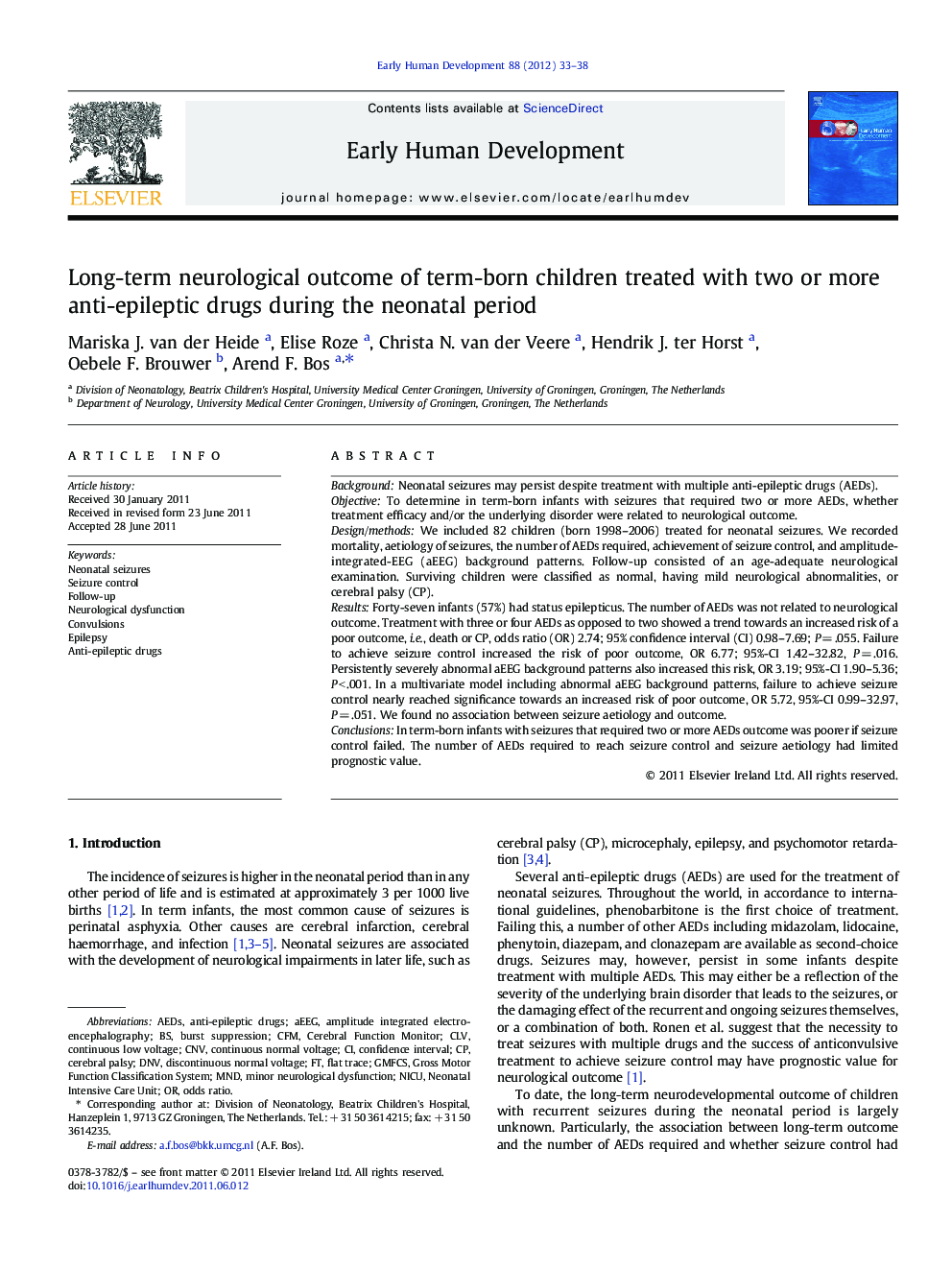| Article ID | Journal | Published Year | Pages | File Type |
|---|---|---|---|---|
| 6172096 | Early Human Development | 2012 | 6 Pages |
BackgroundNeonatal seizures may persist despite treatment with multiple anti-epileptic drugs (AEDs).ObjectiveTo determine in term-born infants with seizures that required two or more AEDs, whether treatment efficacy and/or the underlying disorder were related to neurological outcome.Design/methodsWe included 82 children (born 1998-2006) treated for neonatal seizures. We recorded mortality, aetiology of seizures, the number of AEDs required, achievement of seizure control, and amplitude-integrated-EEG (aEEG) background patterns. Follow-up consisted of an age-adequate neurological examination. Surviving children were classified as normal, having mild neurological abnormalities, or cerebral palsy (CP).ResultsForty-seven infants (57%) had status epilepticus. The number of AEDs was not related to neurological outcome. Treatment with three or four AEDs as opposed to two showed a trend towards an increased risk of a poor outcome, i.e., death or CP, odds ratio (OR) 2.74; 95% confidence interval (CI) 0.98-7.69; PÂ =Â .055. Failure to achieve seizure control increased the risk of poor outcome, OR 6.77; 95%-CI 1.42-32.82, PÂ =Â .016. Persistently severely abnormal aEEG background patterns also increased this risk, OR 3.19; 95%-CI 1.90-5.36; PÂ <Â .001. In a multivariate model including abnormal aEEG background patterns, failure to achieve seizure control nearly reached significance towards an increased risk of poor outcome, OR 5.72, 95%-CI 0.99-32.97, PÂ =Â .051. We found no association between seizure aetiology and outcome.ConclusionsIn term-born infants with seizures that required two or more AEDs outcome was poorer if seizure control failed. The number of AEDs required to reach seizure control and seizure aetiology had limited prognostic value.
